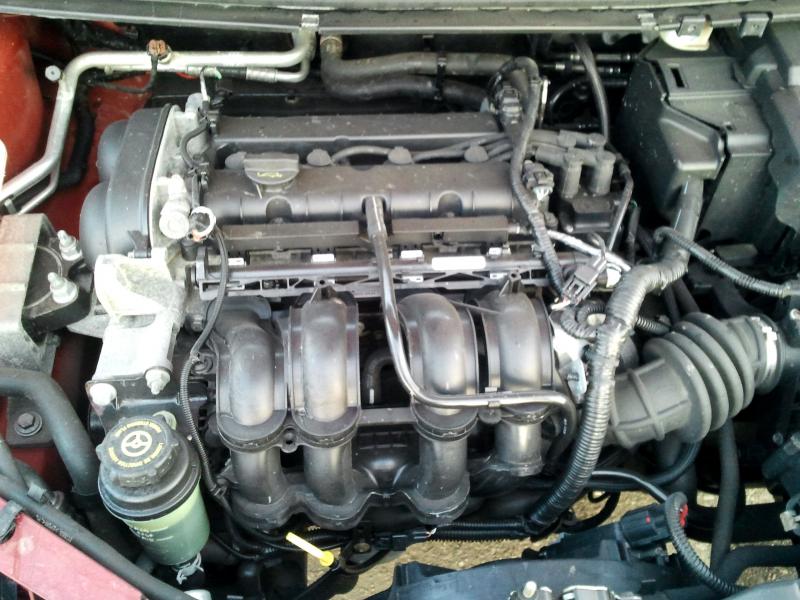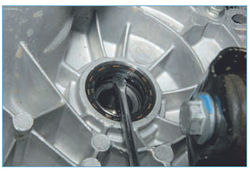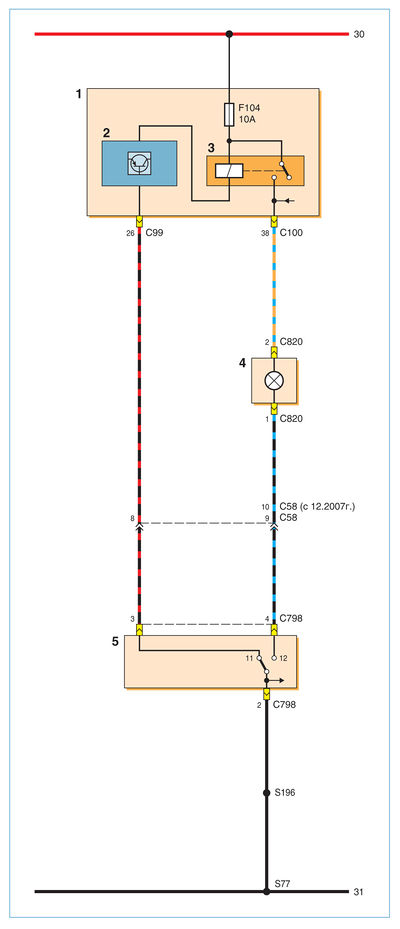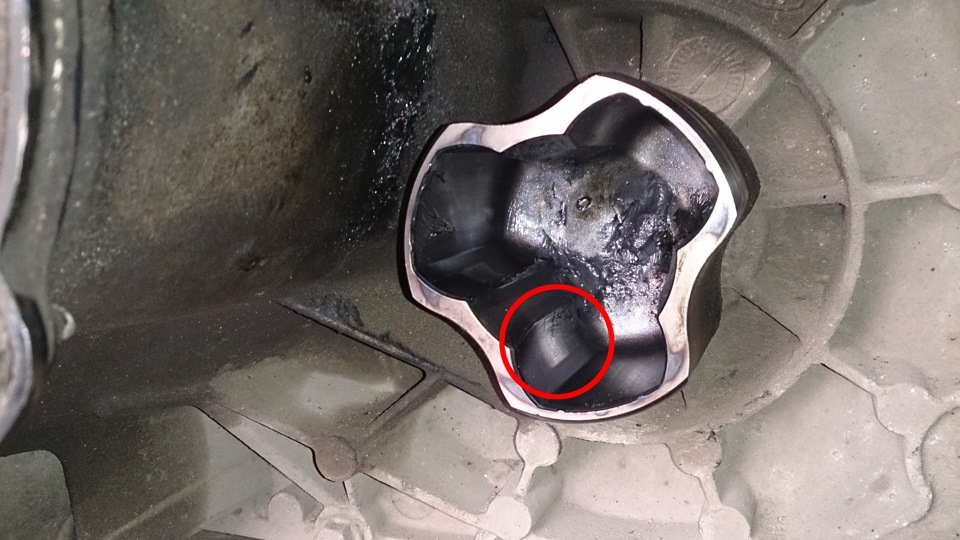The cooling system of this engine differs in design mainly by the presence of an electronic thermostat and a shut-off valve, as well as a different configuration of the expansion tank and its hoses.

Electronic thermostat
The electronic thermostat is a solenoid valve controlled by the ECU.
After processing the signal from the coolant temperature sensor, the ECU issues a command to open the thermostat valve when the coolant temperature reaches 80 ° C. Up to this point, the liquid in the engine cooling system circulates in a "small" circle, bypassing the radiator.
When the liquid reaches a temperature of 98 ° C, the thermostat valve opens completely, and the liquid begins to flow into the engine cooling jacket through the radiator.
The design of the thermostat provides for the possibility of automatic opening of the valve when the engine overheats, even in the absence of a control signal from the ECU.
Stop valve
The shut-off valve on a cold engine is in the closed position and prevents the flow of fluid from the engine cooling jacket into the expansion tank. When the coolant temperature reaches 80°C, the valve opens and coolant begins to circulate through the expansion tank.
The main difference between the cooling system of this engine and other modifications is that not only the radiator, but also the expansion tank is excluded from the configuration of the "small" circle of the cooling system.
In addition, the radiator steam outlet hose is not connected to the expansion tank, but to the cooling system hoses.
The coolant temperature sensor is screwed into the threaded hole in the outlet pipe of the engine cooling system.
Source: http://wiki.zr.ru/117-1_%D0%A0%D0%B5%D0%BC%D0%BE%D0%BD%D1%82_Ford_Focus_II.








![2 generation [2004 - 2008]](/uploads/Ford_Focus_2_2004_-_2008_.jpg)
![3 generation [2011 - 2017]](/uploads/Ford_Focus_3_2011-2015_.jpg)